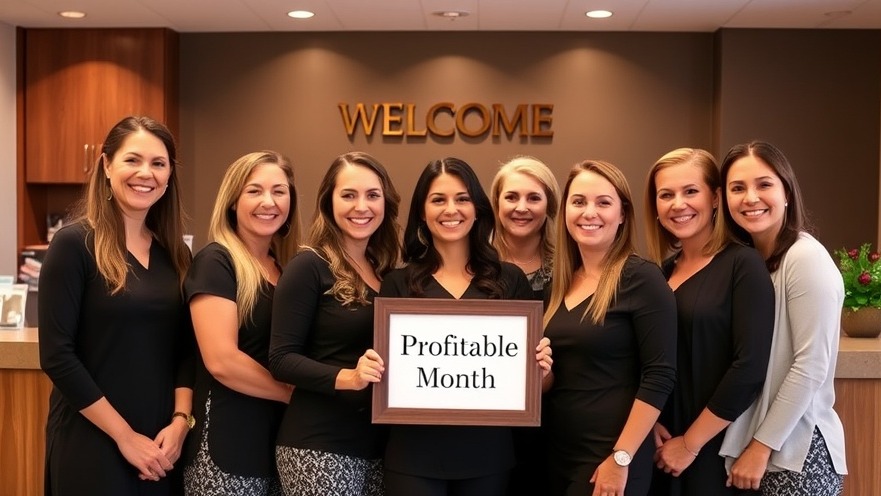
Breaking Even: The Hidden Turning Point Every Spa Owner Faces
Picture this: it’s the end of the month, and you’re sitting with your spa’s booking calendar open, calculator in hand, wondering if the numbers finally tipped into profit.
The staff worked hard, treatments were delivered, retail shelves look a little lighter—but after rent, payroll, and products, did you truly make money this month? For many spa owners, this is a familiar moment of anxiety.
That tipping point—where revenue finally covers your costs—is what financial experts call the break-even point.
But here’s the truth most spa professionals aren’t told: break-even isn’t the finish line. It’s the starting point for sustainable growth and long-term success.
Once you understand how to measure it, manage it, and move beyond it, you gain control over your business in a way that feels both empowering and freeing.
As spa consultant Adam Chatterley often says, “Profit isn’t what’s left over at the end—it’s what you intentionally build from the beginning.” That shift in perspective changes everything.
In this feature, we’ll unpack what break-even really means for spas, why it’s more complex than it looks, and how leading owners and experts are consistently surpassing it.
From time-based revenue strategies and no-show protections to memberships that guarantee cash flow, you’ll discover practical ways to not just hit break-even but leave it far behind.
Foundational Background: Why Break-Even Matters More in Spas
Every business has expenses, but spas face a unique challenge: their “inventory” is time. Unlike products sitting on a shelf, an unused massage room at 3 p.m. is lost revenue forever.
That’s why understanding your break-even point—the moment where your income matches your expenses—isn’t just accounting jargon. It’s the lifeline of your business.
The Small Business Administration describes it simply: “Your break-even point is when your sales equal your costs—no profit, no loss.”
But for spa owners, it’s about more than numbers on a spreadsheet. It’s about whether your staff’s schedules are filled, whether your retail shelves are moving, and whether your clients are returning.
Spa strategist Sheryl Kimes of Cornell University introduced a term that has become a staple in the industry: RevPATH—Revenue Per Available Treatment Hour.
“Time is your most valuable inventory,” she explained. “Once it’s gone, it’s gone.” That perspective reframes break-even not as a static target but as a daily rhythm to manage.

Turning Points and Milestones: Learning from the Field
For many spa owners, the lightbulb moment comes when they realize that break-even isn’t once-a-year math. It’s an everyday goal.
Consider a boutique day spa in California that hit a wall during the pandemic recovery. Bookings were inconsistent, cancellations were draining revenue, and the owner couldn’t figure out why her numbers were flat.
After running a break-even analysis, she discovered that her fixed costs demanded 400 treatment hours per month just to cover expenses.
She was averaging only 340. By reframing her calendar around RevPATH and tightening her no-show policies, she bridged that 60-hour gap and crossed into profit.
Similar stories echo across the industry. Membership programs became a milestone for many spas, transforming unpredictable cash flow into steady monthly revenue.
As consultant Daniela Woerner puts it, “Memberships are the fastest way to surpass your break-even every single month.”
One spa she coached saw 70% of its monthly expenses covered by memberships alone, making every additional service pure profit.
Core Insights, Strategies, and Innovations
So how do you move from scraping by to consistently surpassing break-even? The key lies in blending timeless financial wisdom with modern spa innovations.
1. Master Your Numbers
Calculate your fixed costs (rent, payroll, utilities) and variable costs (products, commissions). Then work out how many treatment hours you need to sell to cover them.
Don’t just stop at monthly figures—break it into weekly or even daily targets. Knowing you need, say, 12 hours of booked treatments today creates urgency and focus.
2. Protect Against No-Shows
A single no-show can erase hours of progress toward your break-even point. Platforms like Fresha and Vagaro now allow spas to take deposits or store cards on file.
According to Fresha, businesses that require deposits reduce no-shows by as much as 90%.
As one owner put it: “I thought deposits would scare clients away. Instead, it made them more committed to showing up.”
3. Dynamic Pricing and Yield Management
Borrowing a page from hotels, some spas are testing dynamic pricing. Offer slightly lower prices during mid-day “shoulder hours” to encourage bookings, while charging premium rates on weekends.
A study in Cornell Hospitality Quarterly found this approach can raise overall revenue per room per hour without discounting your brand.
4. Build Memberships and Packages
Memberships provide guaranteed income. Even if a client doesn’t use their session, the revenue helps cover fixed costs. Packages work similarly, locking in future visits and ensuring recurring revenue streams.
5. Retail Attach Rate
Don’t forget retail. Each product sold boosts contribution margin. Industry benchmarks suggest spas with a strong retail culture add 10–20% more revenue without increasing staff hours.
A massage therapist recommending an aromatherapy oil isn’t just upselling—it’s moving you faster beyond break-even.
6. Profit First Cash Flow
Traditional accounting says: Sales – Expenses = Profit. The Profit First method flips it: Sales – Profit = Expenses.
Spa owners who adopt this mindset set aside profit first, forcing the business to operate more efficiently. As Mike Michalowicz, author of Profit First, says: “Profit isn’t an event. It’s a habit.”

Unique Value: Why Spas Face Break-Even Differently
What sets spas apart from restaurants, gyms, or retail stores? The perishability of their inventory.
A yoga studio can squeeze in more students, a store can carry products into next month, but a massage room at 10 a.m. on Tuesday is gone once the clock strikes 11.
This is why surpassing break-even isn’t just about covering costs—it’s about making sure every treatment room and every therapist hour is maximized.
Successful spa owners see financial health not as a distraction from wellness but as a foundation for it. A profitable spa can reinvest in staff training, upgrade facilities, and create experiences that truly serve guests.
Practical Tips and Takeaways
Here are field-tested steps you can apply today:
Calculate Daily Break-Even: Don’t just know your monthly number. Break it down to how many booked hours you need each day.
Track RevPATH Weekly: A quick snapshot tells you whether your pricing and occupancy are aligned.
Implement Deposit Policies: Even $20 up front cuts down last-minute cancellations.
Test Shoulder Hour Specials: Attract flexible clients to fill midday gaps.
Launch a Membership Pilot: Even 50 loyal members can stabilize your cash flow.
Prioritize Profit Allocation: Adopt a Profit First approach to ensure surplus translates into take-home pay.
As consultant Adam Chatterley often reminds owners, “Your P&L isn’t just a report card—it’s a roadmap. Once you know the numbers that matter, you can finally drive the business instead of it driving you.”
Conclusion: Turning Break-Even Into Breakthrough
Understanding your spa’s break-even point isn’t just about crunching numbers—it’s about reclaiming control. Once you know where the line sits, you can make confident decisions that move you past it faster and more consistently.
The key lessons are clear:
Treat your time as your most valuable inventory.
Protect against no-shows with deposits and reminders.
Build recurring revenue through memberships and packages.
Use smart pricing strategies to balance peak and off-peak demand.
Prioritize profit intentionally, not accidentally.
When you put these strategies into practice, break-even becomes less of a struggle and more of a stepping stone.
You’ll not only cover your costs—you’ll build resilience, reward your team, and create the freedom to reinvest in your client experience.
As Sheryl Kimes reminds us, “Time is your most valuable inventory; once it’s gone, it’s gone.” The question for spa owners is simple: will you let those hours slip away, or will you maximize every one to create sustainable profit and lasting impact?
Now is the time to take a closer look at your numbers, test a new strategy, and start seeing break-even as just the beginning.
Surpassing it consistently is within your reach—and once you do, you’ll discover the peace of mind and growth potential you’ve been searching for.
 Add Row
Add Row  Add
Add 




Write A Comment